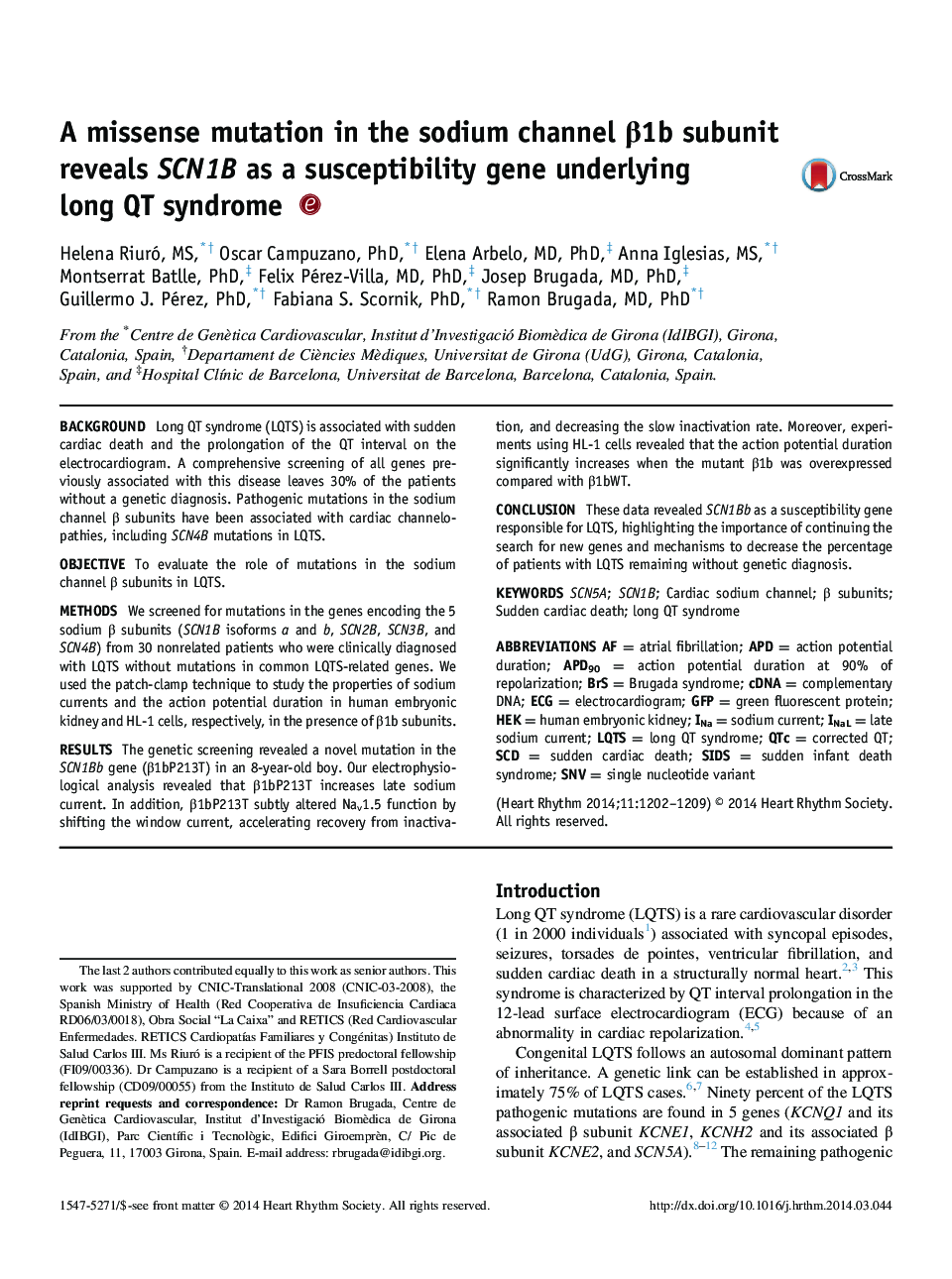| Article ID | Journal | Published Year | Pages | File Type |
|---|---|---|---|---|
| 2922000 | Heart Rhythm | 2014 | 8 Pages |
BackgroundLong QT syndrome (LQTS) is associated with sudden cardiac death and the prolongation of the QT interval on the electrocardiogram. A comprehensive screening of all genes previously associated with this disease leaves 30% of the patients without a genetic diagnosis. Pathogenic mutations in the sodium channel β subunits have been associated with cardiac channelopathies, including SCN4B mutations in LQTS.ObjectiveTo evaluate the role of mutations in the sodium channel β subunits in LQTS.MethodsWe screened for mutations in the genes encoding the 5 sodium β subunits (SCN1B isoforms a and b, SCN2B, SCN3B, and SCN4B) from 30 nonrelated patients who were clinically diagnosed with LQTS without mutations in common LQTS-related genes. We used the patch-clamp technique to study the properties of sodium currents and the action potential duration in human embryonic kidney and HL-1 cells, respectively, in the presence of β1b subunits.ResultsThe genetic screening revealed a novel mutation in the SCN1Bb gene (β1bP213T) in an 8-year-old boy. Our electrophysiological analysis revealed that β1bP213T increases late sodium current. In addition, β1bP213T subtly altered Nav1.5 function by shifting the window current, accelerating recovery from inactivation, and decreasing the slow inactivation rate. Moreover, experiments using HL-1 cells revealed that the action potential duration significantly increases when the mutant β1b was overexpressed compared with β1bWT.ConclusionThese data revealed SCN1Bb as a susceptibility gene responsible for LQTS, highlighting the importance of continuing the search for new genes and mechanisms to decrease the percentage of patients with LQTS remaining without genetic diagnosis.
